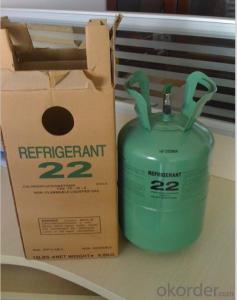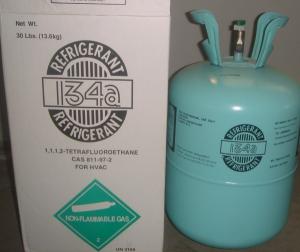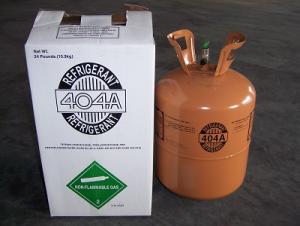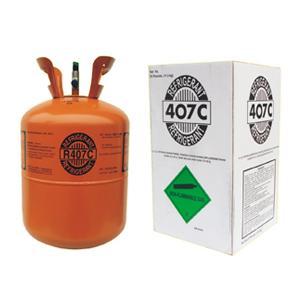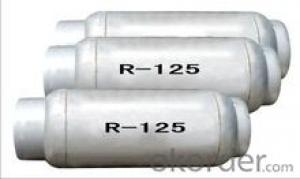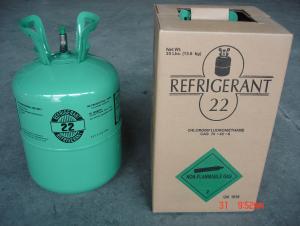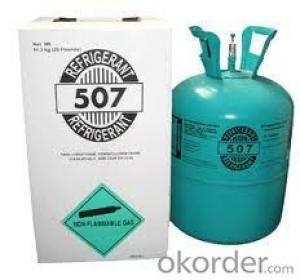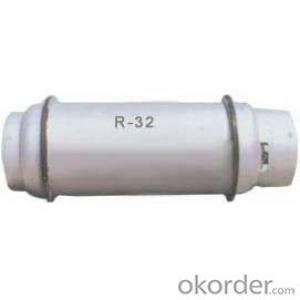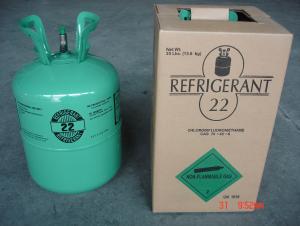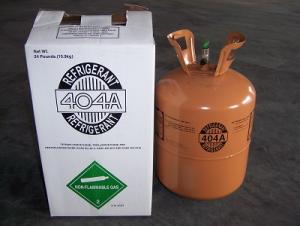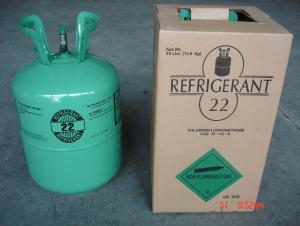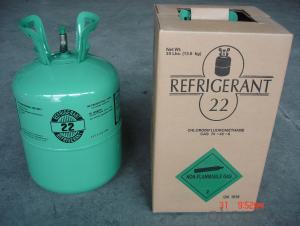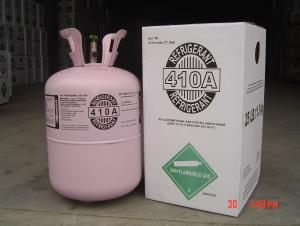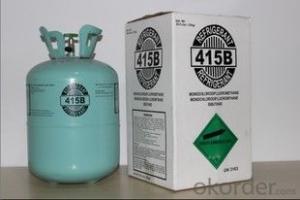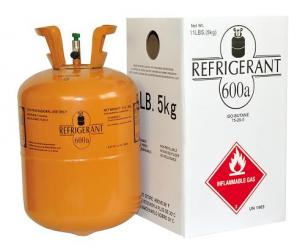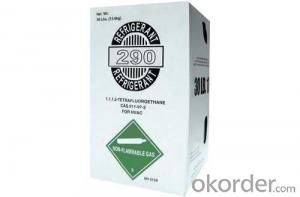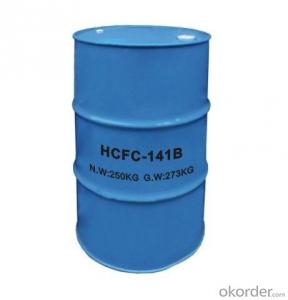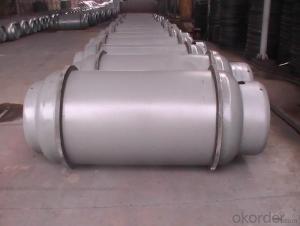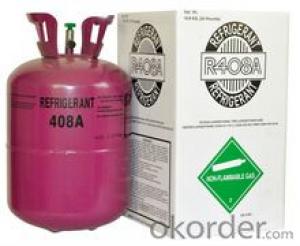Widely-Applied R22
- Loading Port:
- Shanghai
- Payment Terms:
- TT OR LC
- Min Order Qty:
- -
- Supply Capability:
- 1000MT m.t./month
OKorder Service Pledge
OKorder Financial Service
You Might Also Like
Specifications
refrigerant gas R22 with high purity
1.packing:11.3kg/25lbs
2.OEM is accepted
3.Purity>99.9%
Packing disposable steel cylinder 13.6kg/30lbs
Application
The product is used as a refrigerant in household , industrial and commercial airconditioning systems.
It can also be used as an aerosol propellant for pesticide and paint , or as a fire extinguishing agent.
It is a primary feedstock for fluoropolymers.
Physical and chemical properties
Under normal temperature and pressure , the product is a colorless, odorless and nontoxic gas. Its melting point is -160°C, its boiling point is -40.8°C and its liquid density is 1.213g/cm3 at 20°C. Its mixture with air is nonflammable and free of explosion risk. It shows good thermal and chemical stabilities under normal conditions.
Storage&transportation
The product is packed in appropriate cylinders or tanks(or tank cars). It is to be kept in cool and dry place, without being exposed to heat source , sunlight and raining.
It is to comply with the regulations of railway and road transportation issued by Chinese government concerning hazardous cargo.
Packing specifications
Non-refillable cylinder: 25lbs/11.3kgRefillable Cylinder:400L,800L,926L,1000L;ISO TANK.
- Q: What are the gaseous states of the oxygen-containing derivatives of the hydrocarbons under the standard conditions?
- Hydrocarbon derivatives of oxygen in the standard conditions are gaseous formaldehyde.
- Q: What is the difference between an aromatic compound and a hydrocarbon derivative?
- The aromatic compound is a benzene ring containing compound, which may be a hydrocarbon or a hydrocarbon derivative. Hydrocarbons are hydrocarbon-containing compounds, and hydrocarbons containing hydrocarbons other than hydrocarbons are derivatives of hydrocarbons. The two concepts have crossed.
- Q: What does organic and inorganic mean?
- [Inorganic] inorganic is inorganic compounds referred to, usually refers to non-carbon compounds. A small number of carbon-containing compounds, such as carbon monoxide, carbon dioxide, carbonates, cyanides, etc. are also inorganic. Inorganic materials can be divided into oxides, acids, alkalis, salts and so on. Organic compounds Definitions Organic compounds usually refer to carbon-containing compounds, or hydrocarbons, and their derivatives, are collectively referred to as organic compounds.
- Q: Simply talk about hydrocarbons
- Hydrocarbon is a hydrocarbon compound. The organic compound consisting only of carbon and hydrogen is called a hydrocarbon and a hydrocarbon, which reacts with chlorine, bromine vapor, oxygen, etc. to produce a hydrocarbon derivative, Hydrocarbons (and benzene) do not react with strong acids, strong bases, strong oxidants (eg potassium permanganate), but unsaturated hydrocarbons (olefins, alkynes, benzene homologues) can be oxidized or react with hydrogen halide The
- Q: Organic organic compounds are organic matter?
- Organic polymer compounds are organic matter
- Q: Are there two derivatives of equivalent hydrogen?
- You give the scope is too broad, at least to set in what kind of functional group range ah.
- Q: What are the inorganic compounds
- The precise organics are defined as: hydrocarbons and their derivatives. The derivative is the product of the hydrogen atom H being replaced by other radicals
- Q: Sodium can be used to identify derivatives of hydrocarbons
- Sodium can identify hydrocarbon derivatives that are alcohol
- Q: What is the current status of carbon dioxide capture technology and how is it compared to plants that absorb carbon dioxide?
- The principle is probably that the middle of the thing is the electrode, and then the surface of the electrode there are some powerful catalyst in the sunlight can promote the oxidation of water or carbon dioxide reduction. The electrode can move the proton to the other side and not allow the product or product to move to the other side. After the proton has been transferred, the electrochemical process can be used to hydrogenate the carbon dioxide.
- Q: Why not ah?
- A series of compounds in which a hydrogen atom in a hydrocarbon molecule is replaced by another atom or radical is called a derivative of a hydrocarbon
Send your message to us
Widely-Applied R22
- Loading Port:
- Shanghai
- Payment Terms:
- TT OR LC
- Min Order Qty:
- -
- Supply Capability:
- 1000MT m.t./month
OKorder Service Pledge
OKorder Financial Service
Similar products
Hot products
Hot Searches
